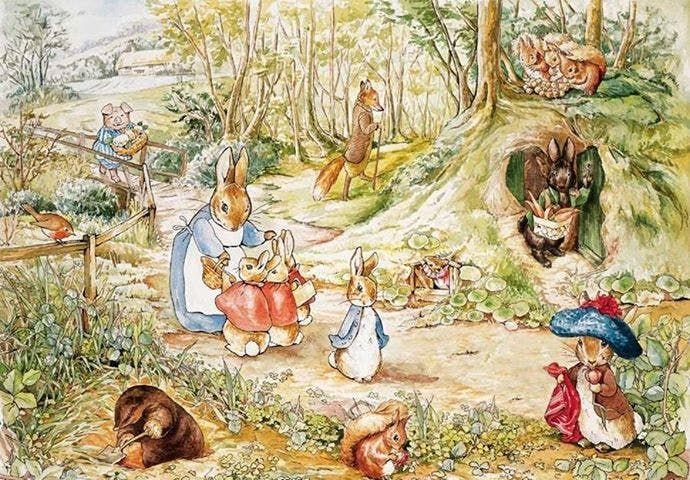On Darkness in Children’s Stories
How to preserve their innocence while telling them the truth
“One, two, three, four, five, six leetle fat rabbits!” repeated Mr. McGregor, counting on his fingers. Mrs. McGregor took hold of the sack and felt it. “Not fit to eat; but the skins will do fine to line my old cloak.”
“Line your cloak?” shouted Mr. McGregor--“I shall sell them and by myself baccy!”
“Rabbit tobacco! I shall skin them and cut off their heads.”
Beatrix Potter, The Tale of the Flopsy Bunnies
When you read to your babies, you hardly think of reading them stories about cute little bunnies being skinned, decapitated and eaten. You hardly think of showing them cute little characters dressed in pinafores and pretty blue jackets only to be in serious danger of being killed. But, what if this is exactly what we should be doing? Modern Children’s literature sacrifices something significant when it creates worlds and stories with no real danger, no serious consequences. How do we introduce these stories without robbing children of their innocence? Without being sinister and causing the child to get nightmares or complexes? This is what I have explored in today's essay.
Beatrix Potter’s character Peter Rabbit and his adventures with delightful woodland animals dressed up as 19th century english middle class, has become the cornerstone for children’s literature. However, there is something more significant about Beatrix Potter's stories that might surprise you if you truly take the time to read them. These stories are full of more murder, danger, darkness and death than you could ever suspect looking at Beatrix Potter’s pretty little Lake District illustrations. And that makes them perfect for little children.



